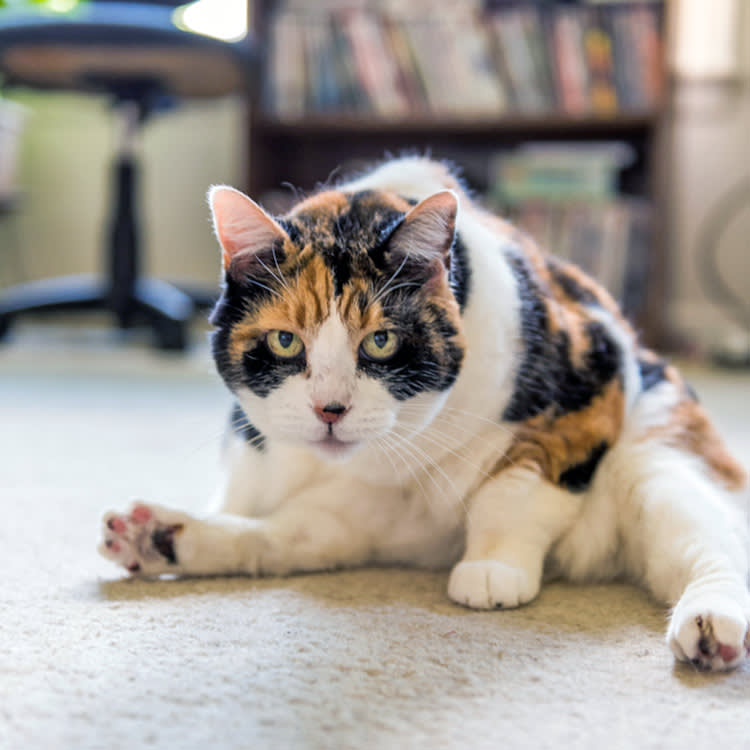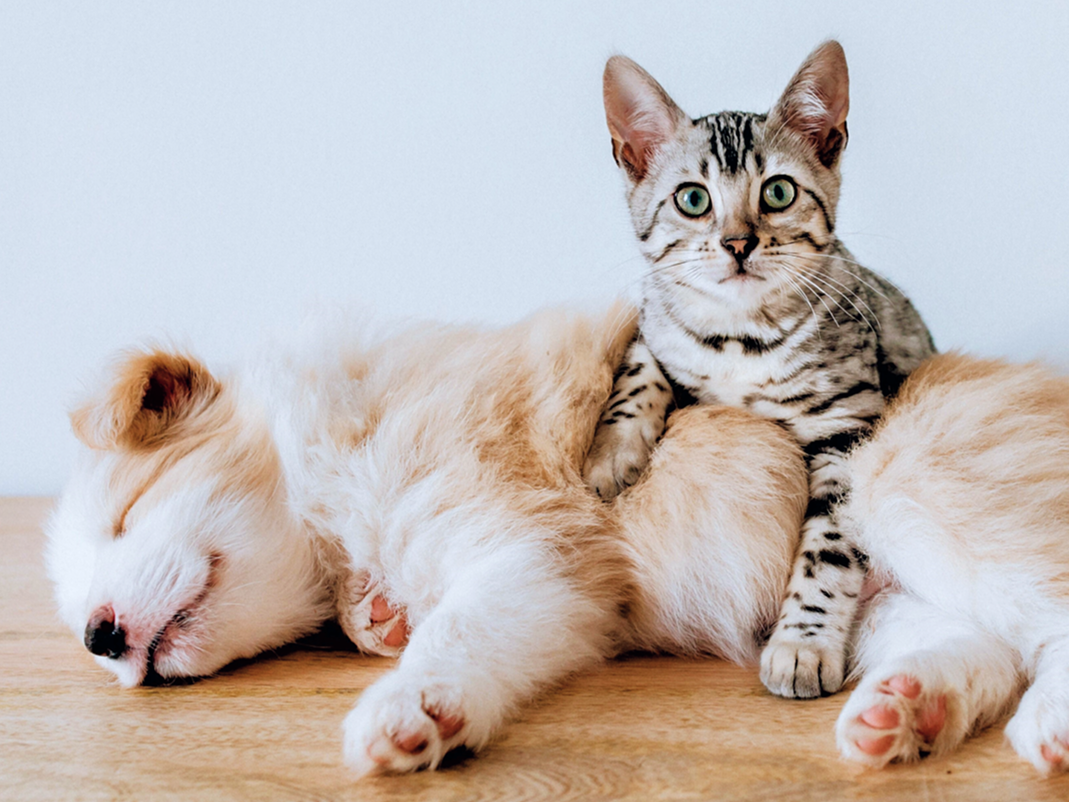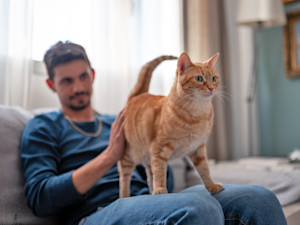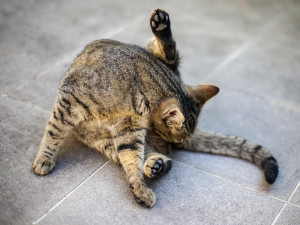10 Things You Should Know About Your Cat’s Anal Glands
You may not want to, but you should...
In This Article:
What Are Anal Glands In Cats? Why Do Cats Have Anal Glands? How Do Cat Anal Glands Work? What Are Common Problems in Cat Anal Glands? What Are Signs of Anal Gland Problems in Cats? Should I Express My Cat’s Anal Glands? How Do I Express My Cat’s Anal Glands? When Should I See A Vet About My Cat’s Anal Glands? Treatment of Problems in Cat Anal Glands
Some people live with cats for years without knowing that they have anal glands. This is the ideal situation for both cats and cat parents. Discovering these scent glands is usually an unpleasant affair, and your cat would prefer to go through life with you blissfully unaware of the intricacies of their butt. Despite this, learning a little about your cat’s anal glands can come in handy if problems arise.
Check out customizable policies from our friends at Lemonade Pet Insurance—so you only pay for what you need.
What are anal glands in cats?
Anal glands are scent glands that are located in a specialized structure near a cat’s anus. To make my anatomy professor happy, they should actually be referred to as “anal sacs” because the glandular tissue lines two sacs that fill with the liquid that the glands produce.
How much do you spend on your pet per year?
Why do cats have anal glands?
Most carnivorous mammals have anal glands. These scent glands seem to play a different role depending on the species. Some common ways that anal gland secretions are used include:
Defense (think skunk spraying)
Territory marking
Identification of individuals
Sex recognition
Reproductive status
Based on a study of the volatile chemicals present in cat anal gland discharge, it seems most likely that cats use the scent to identify other individuals. This can let cats find out if there are newcomers to their area and allows them to recognize other cats using scent.
Where are a cat’s anal glands located?
A cat’s anal glands are located within the muscles surrounding their anus. The anus is held closed by a series of muscles that encircle it. The anal glands sit between two of these muscle layers, at the five and seven o’clock positions relative to a cat’s anus. The sacs empty through two short ducts that exit closer to the four and eight o’clock positions on the anus.
These openings may or not be readily visible when the anus is examined. If the anal sphincter is tightened, the openings roll inward, making them difficult to see. Under normal circumstances, the sacs should not be large enough to be visible beneath the skin around the anus.
How do cat anal glands work?
The glandular tissue lining the anal sacs produces a fluid that fills the anal sacs. Bacteria within the anal sacs help give this fluid its distinct aroma, which is different for each individual. If you’re wondering what the discharge from a cat anal gland smells like, think “rotting seafood” or “dumpster with a hint of old fish” to get the idea. The aroma is often gag-inducing and tends to linger.
These stinky secretions can vary in consistency from a thin liquid to a thick paste. It can be yellow, brown, black, or whitish-gray in appearance. Anal gland material is usually expressed onto a cat’s poop when they defecate. The pressure from the feces passing through the anus plus the muscle contractions from posturing work to squeeze the material out of the anal glands.
What are common problems with cat anal glands?
Cat anal gland issues occur less commonly than those of dogs. Despite this, cats can run into some problems with their anal glands, such as:
Impaction
Inflammation
Infection
Abscess
Rupture
Cancer
Anal gland infection in cats can lead to an abscess. A cat anal gland abscess is no fun to deal with and can make cats miserable until they rupture. Cancer of the anal gland is usually due to an apocrine gland anal sac adenocarcinoma (AGASACA), which can metastasize to local lymph nodes early in the course of the disease. AGASACA fortunately occurs less commonly in cats than it does in dogs, but Siamese, Burmese, Birman, and Persian seem to get this cancer more commonly than other cat breeds.
What are signs of cat anal gland problems?
Cats aren’t always the best at telling their parents what’s bothering them, but they may give some clues that their anal glands are bugging them. Some signs of cat anal gland problems include:
Scooting
Tail chasing
Licking or biting near the tail
Discomfort when sitting
Foul odor
Redness or swelling around the anus
Discharge or blood in the hair around the anus
Straining to defecate
Pain when defecating
Signs may not be obvious until a cat’s anal glands rupture, which can produce a dramatic amount of stinky, bloody fluid very quickly.
Should I express my cat’s anal glands?
As established at the start of this article, everyone’s happiest if they’re not thinking about a cat’s anal glands. Anal gland expression in cats is not a good time for anyone involved. Routine expression of your cat’s anal glands is not needed unless your cat has chronic anal gland issues, and you’ve been instructed to regularly empty the glands by your vet.
How do I express my cat’s anal glands?
Cat anal gland expression is best handled by a professional like your vet, a veterinary technician, or a groomer. If you’re super curious about how to express cat anal glands, the information is out there, but I again stress: not fun. I generally recommend that people preserve their relationship with their cat and let someone else handle the unpleasant procedure and the smells that go along with it.
When should I see a vet about my cat’s anal glands?
If you see any of the signs listed above, it’s a good idea to see your vet. Those symptoms don’t necessarily mean there��’s an anal gland problem because other issues like flea infestation, allergies, back pain, and constipation can cause similar signs. Don’t be tempted to explore your cat’s anal glands on your own. If there’s a problem, it’s best to have someone who’s familiar with the area deal with it.
How are cat anal gland problems treated?
If your vet does diagnose a problem with your cat’s anal glands, the treatment will vary based on the type of problem and its severity. Some common approaches for anal gland diseases in cats include:
Anal sac expression
manual expression of the sacs may be all that is needed for anal glands that are clogged or impacted with thick material but not infected. Mild-to-moderate sedation may be necessary for this because no cat appreciates the digital rectal examination often necessary to empty full anal glands.
Abscess lancing
If your cat has developed an anal gland infection that has led to an abscess, the best way to get that infected fluid out is by draining it. This requires heavier sedation to allow your vet to clip and clean the area before making an incision over the abscess and flushing all the gross material out. In some cases, the abscess will have ruptured before getting to the vet clinic. Although this makes things a little easier, flushing of the abscess is usually still recommended.
Medications
Infected or abscessed anal glands are often treated with antibiotics. They may not be needed in some cases with good drainage of infected material, but most veterinarians still prescribe them just in case. Antibiotics may be accompanied by anti-inflammatories or narcotics to help reduce swelling and pain.
Sampling
In cases where your veterinarian is suspicious of cancer as a cause of a cat’s anal gland problems, your vet may recommend a sample from the anal gland. This is often done by passing a needle through the skin into the anal sac to obtain a sample that can be sent off to a laboratory for analysis.
Removal of sacs surgically
For cats with cancer or recurrent anal gland problems, removal of the sacs may be recommended. This procedure can be a little delicate due to the location, but cats generally tolerate it well. Cats don’t seem to miss the anal glands once they’re gone.
Bottom line
Anal glands are usually invisible to cat parents because they rarely cause issues. When they do cause problems, it’s best to see a veterinarian for care to make sure that appropriate treatment is started.
I recommend that cat parents stay away from the anal glands unless deemed necessary by their vet. Your cat doesn’t want you back there, and you don’t want to experience the distinct odor of cat anal glands unless you have to.
References
Corbee, Ronald Jan et al. “A Cross-Sectional Study on Canine and Feline Anal Sac Disease.” Animals : An Open Access Journal from MDPI vol. 12,1 95. 31 Dec. 2021, doi:10.3390/ani12010095opens in new tab.
Ehrenzweig, Joel. “Novel Fiber-rich Supplement Effective for Prevention and Treatment of Acute, Episodic and Chronic Anal Gland Disease in Dogs and Cats.” International Journal of Veterinary and Animal Medicine 1(1):104, Jan 2018.
Frankel, Jessica L et al. “Gross and cytological characteristics of normal feline anal-sac secretions.” Journal of Feline Medicine and Surgery vol. 10,4 (2008): 319-23. doi:10.1016/j.jfms.2007.12.006opens in new tab.
Jimeno Sandoval, J C et al. “Outcomes and complications of anal sacculectomy for non-neoplastic anal sac disease in cats: 8 cases (2006-2019).” The Journal of Small Animal Practice vol. 63,1 (2022): 56-61. doi:10.1111/jsap.13414opens in new tab.
Miyazaki, Tamako et al. “Olfactory discrimination of anal sac secretions in the domestic cat and the chemical profiles of the volatile compounds.” Journal of Ethology vol. 36,1 (2018): 99-105. doi:10.1007/s10164-017-0532-xopens in new tab.
Ruffner, Eliza et al. “Anal sacculectomy in cats.” Clinician’s Brief March 2014.











